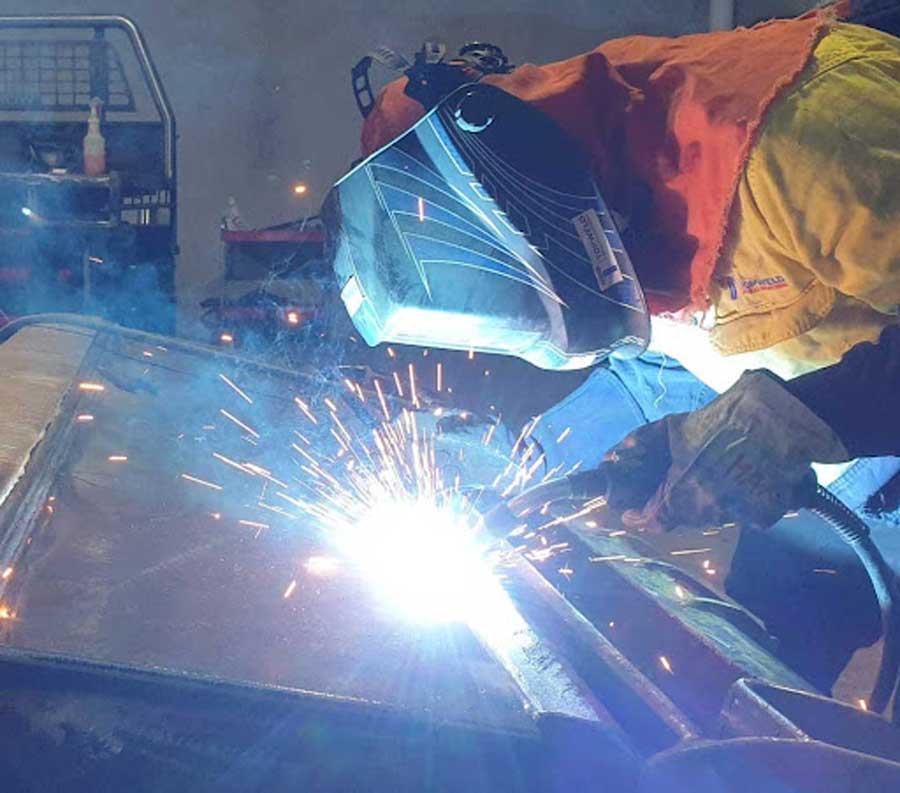The steps involved in welding sheet metal are vastly different compared to thicker materials because of how easy it is to accidentally put out too much power and burn through your workpiece. On the other hand, put out little power and you will likely have trouble penetrating the material and end up with a weaker joint at the end. This generally comes down to a matter of experience and intuition, which is what makes it a difficult hurdle to overcome if you are a beginner welder and metal fabricator.
If this experience sounds familiar to you, then you’ve come to the right website. Topweld General Engineering is a team of expert metal fabricators that provide welding services in New South Wales. In our years of experience, we have some wisdom to impart that you might be very interested in.
Common Mistake in Welding Sheet Metal
Excessive heat is a common mistake when it comes to welding sheet metal. One consequence of this is burn-through. This happens when the weld pool digs too deep into the material and punches a hole through it. As you may already know, the temperature of the weld pool is based on the strength of the current. If the amperage is too high, it can cause the weld pool to become runny and harder to contain, which results in increased spater, undercut, and eventually burn-through. Another issue that may occur is warping, which is caused by focusing too much on one area of the workpiece without giving it ample time to cool down and retain its shape.
Welding Technique and Style
To avoid the complications involved in sheet metal welding, it is important that you choose the appropriate welding technique and style. Though you can still use many of the typical welding techniques that you would normally use for other workpieces, we highly recommend using either Metal Inert Gas (MIG) welding or Tungsten Inert Gas (TIG) welding. The welding transfer mode you should go for if you are using the former is Short-circuit transfer. This is done by creating a short circuit by touching the weld pool with the electrode at low heat. The filler metal should deposit carefully onto the weld pool. Use argon-based shielding gas to protect the weld pool while you work.
If you are experienced with TIG welding from Canberra, NSW, you should have an easier time controlling the penetration of your weld. That is part of the reason why aluminum fabricators generally prefer this method over the alternative. Just be careful not to focus the arc on any specific areas of the workpiece for too long in order to prevent warping. Avoid welding in a long continuous streak and instead jump from one section to another while you work. This can allow the workpiece to cool down and harden before you begin working on it again. On the topic of cooling down, you can also use chill bars to control the temperature of the workpiece.
Choosing the Filler Metal
ER70S-2 is the safest bet when it comes to choosing the filler metal for sheet metal welding. Otherwise, silicon bronze is also viable. To make sure that you don’t end up depositing too much filler metal on your joint, we highly recommend choosing the width of filler wire or rod that is not thicker than the base metals. Keep a close eye on the gauge of the filler material you are using and compare it with the thickness of your workpiece for safe measure.
Keeping Your Workspace Clean
One factor that most beginners usually overlook when welding is the cleanliness of their work station. It cannot be emphasized enough how important it is to keep your workpiece and filler materials clean so foreign materials don’t contaminate it and cause porosity. Because of the thinness of sheet metal, the effects of welding complications are even more severe, and it could make the weld joints more brittle. Start with a fine grit sandpaper specifically made for metal to remove paint and rust off your base metal. Next, clean the corners with a wire brush, making sure to remove any impurities you see. Finally, you can use a clean rag and some acetone to wipe the workpiece.
To Conclude
Mastering the delicate work of sheet metal welding requires practice and a little bit of trial and error, so don’t be discouraged if you don’t get it right the first time. Use scrap metal for experimenting, and try to get the hang of controlling the penetration of your weld pool. The tips above will come in handy in whatever sheet metal material you work with, so be sure to consult this guide again when you want a refresher.
If you want a professional welder from Hillston to do it for you instead, don’t hesitate to call Topweld General Engineering. Our team is composed of the best aluminum and stainless steel fabricators in New South Wales, Australia. It is our mission to ensure top-quality welding services to all our valued customers.








